When work, life, and spring rains get you down–call up some friends and go caving. That is exactly what Mike and Kitty did.
Most of the time when the Florida Speleological Society (FSS) goes to the Tennessee, Alabama, Georgia (TAG) area, it is fall. Spring rain adds another demention to caving. We would only go to caves that had no chance of flooding. Our first cave was Howard’s Waterfall, which has an upper passage that stays dry and a lower passage that takes the water. After checking the weather, we felt reassured with only sprinkles in the forecast. The entrance way was indeed dry. However, water was dripping heavily from almost every formation with puddles throughout the cave. We spent 3.5 hours exploring the entire upper passage back to the register room. At the end of the trip we were quite surprised–it sounded like a train was rolling through the the cave entrance. Water was pouring into the entrance and cascading down into the lower passages. We crawled through a stream passage now a foot deep to get out. No one in the group had ever seen the elusive Howard’s waterfall at the entrance before. It was a spectacular visit!
We aired on the side of caution the entire trip but were still able to visit: Tumbling Rock, Signal Light Pit, Cedar Ridge Crystal Cave, and Kara, in addition to Howard’s Waterfall. We attempted Bluff River but felt we didn’t want to take a chance once we saw how much water was flowing inside the entrance. We also stopped by Lim Rock, not expecting to cave, but wanting to see what the normally dry entrance looked like.
It was a great time seeing what caves do best–take on water.
Story by Philip Walker
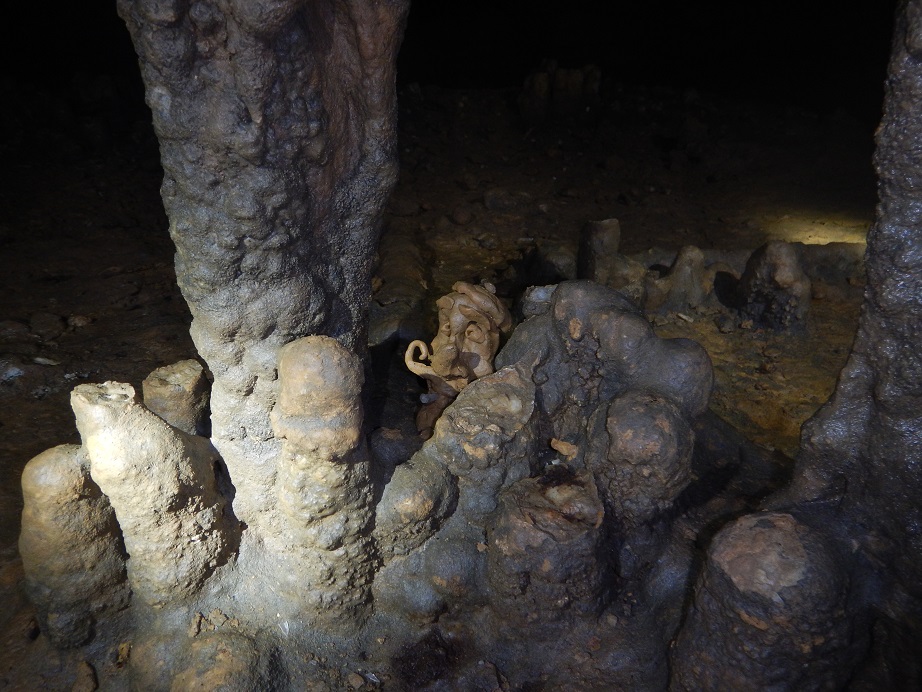
A small creature watched from behind the rocks.
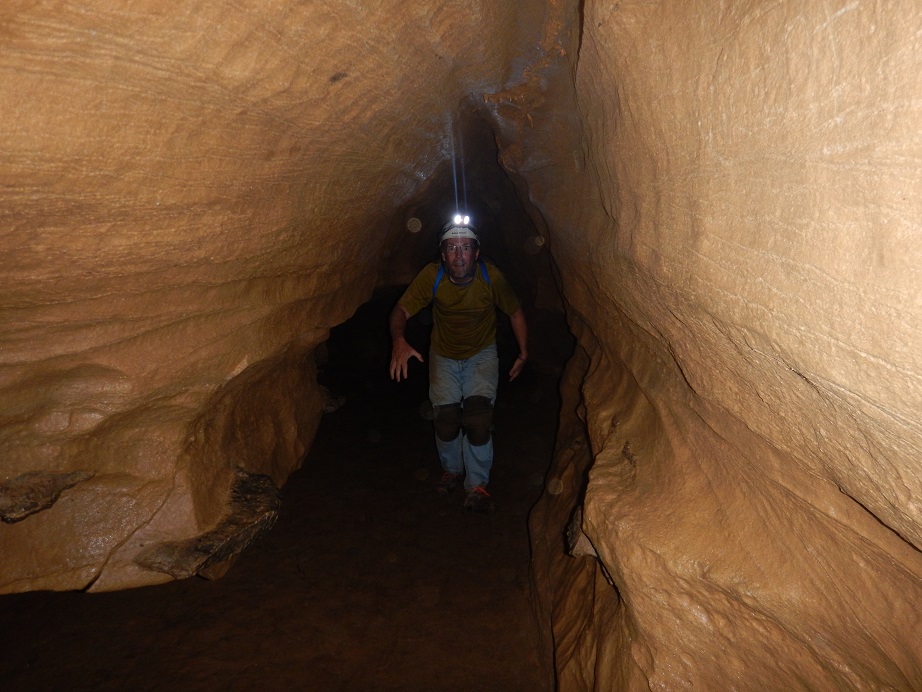
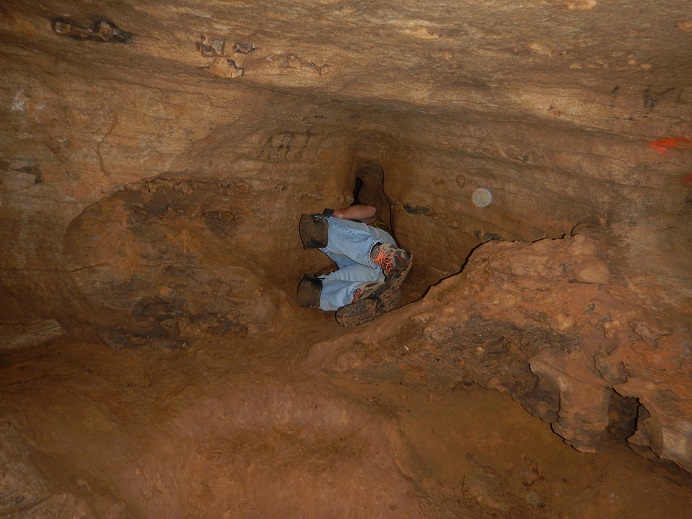
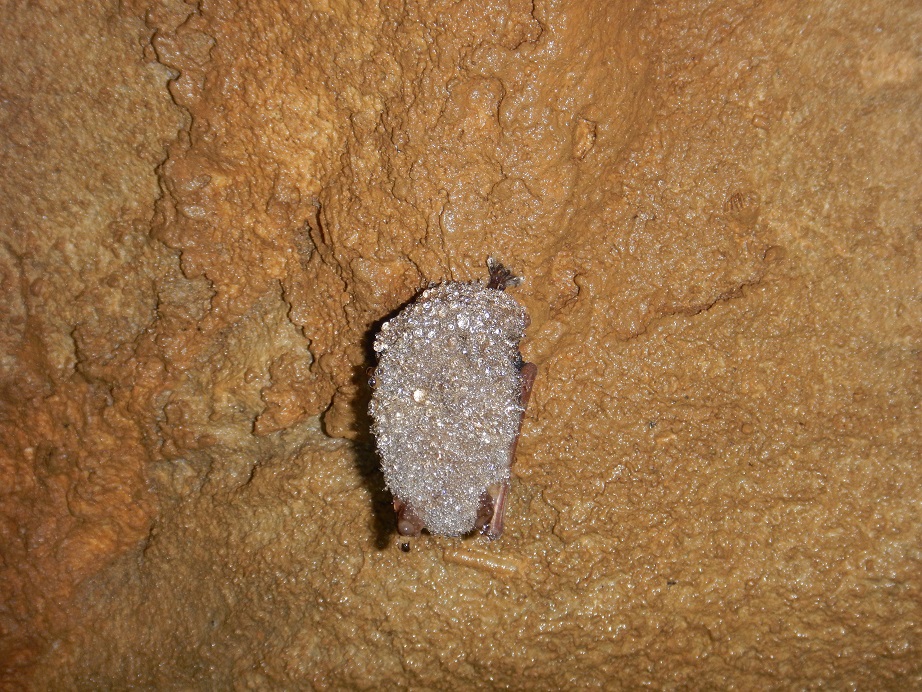
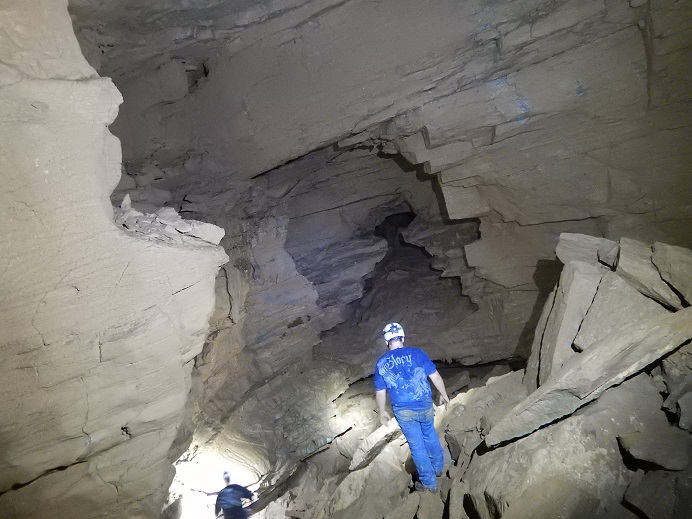
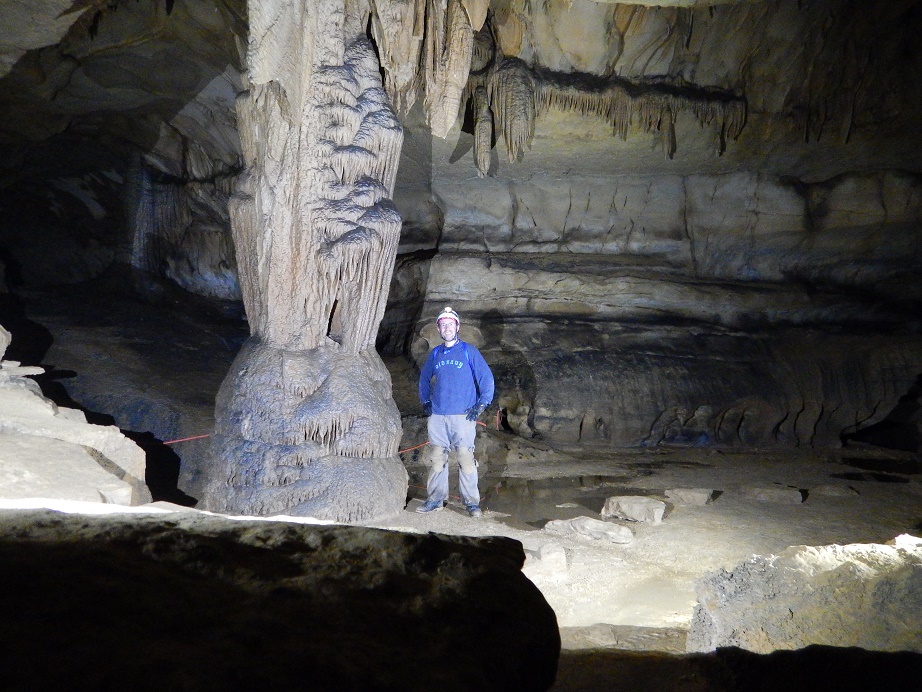
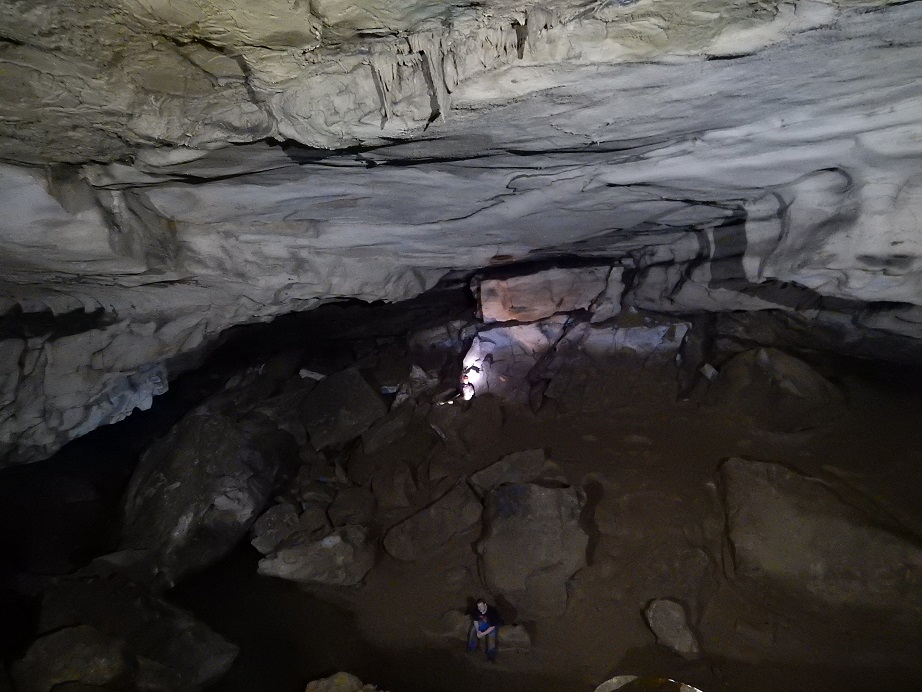
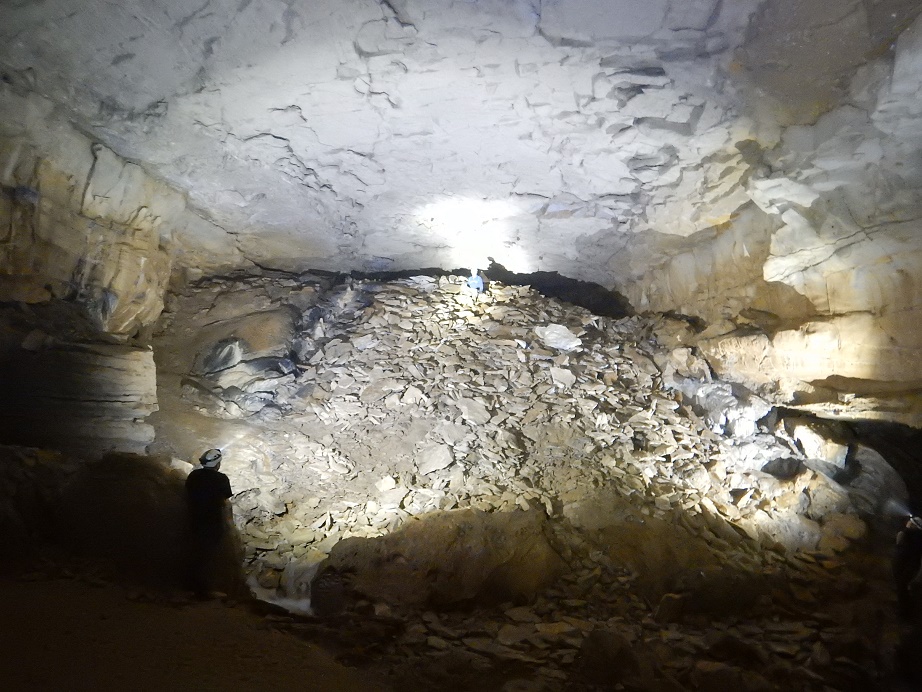
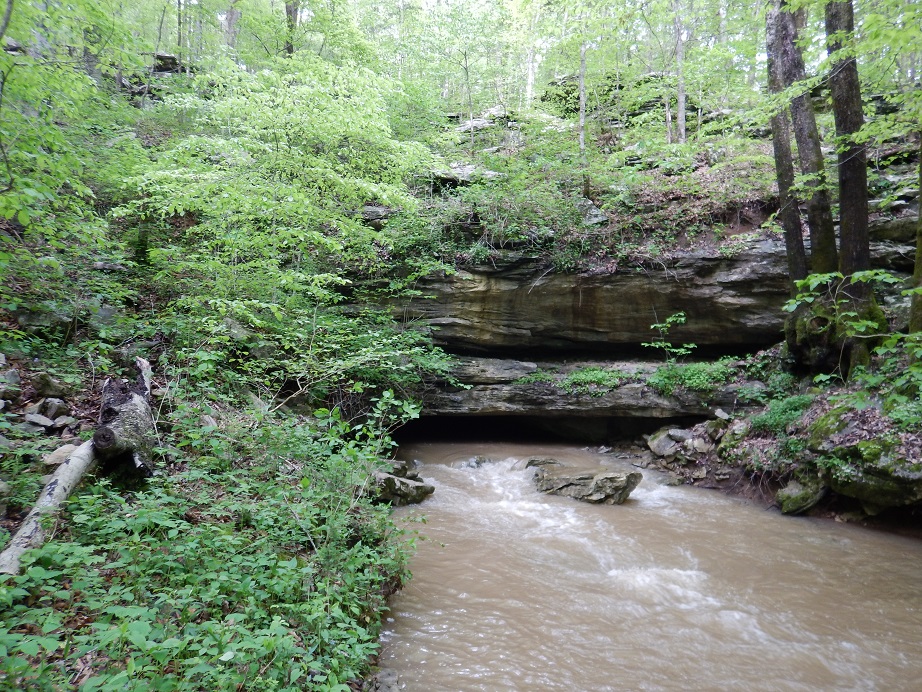
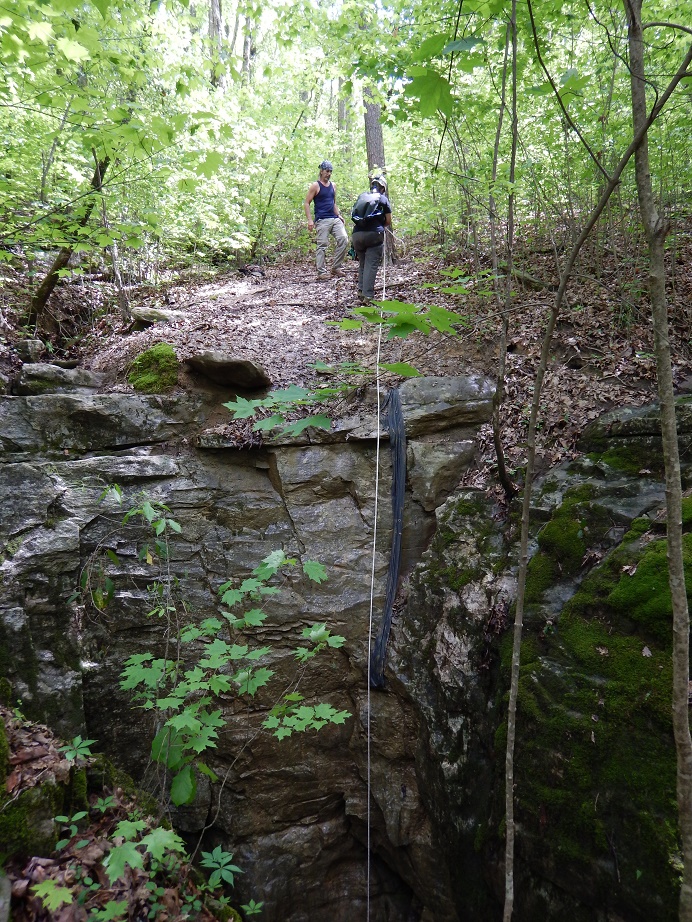
A nice easy drop into Signal Light Pit.
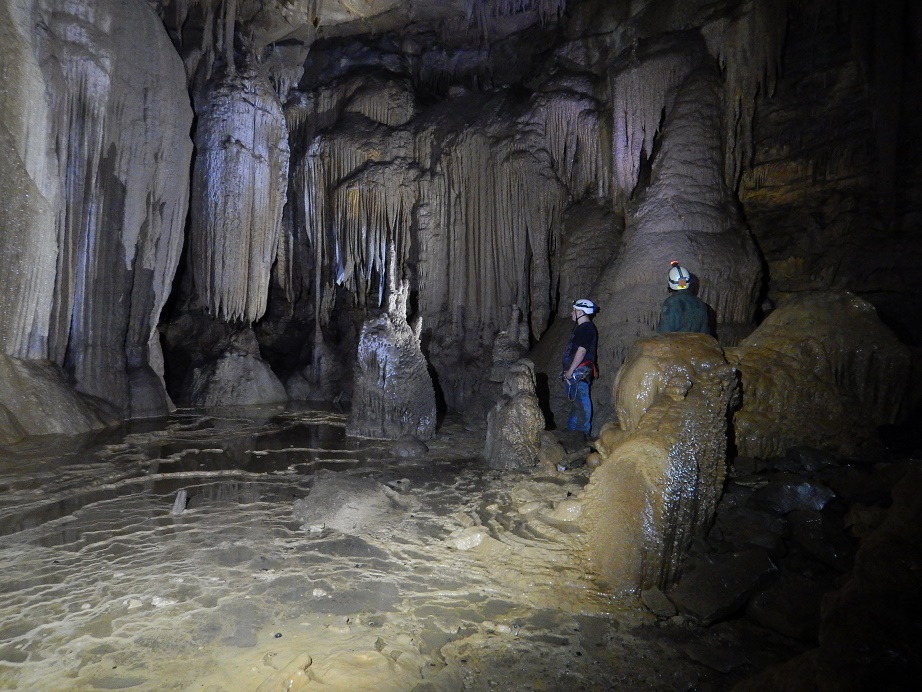
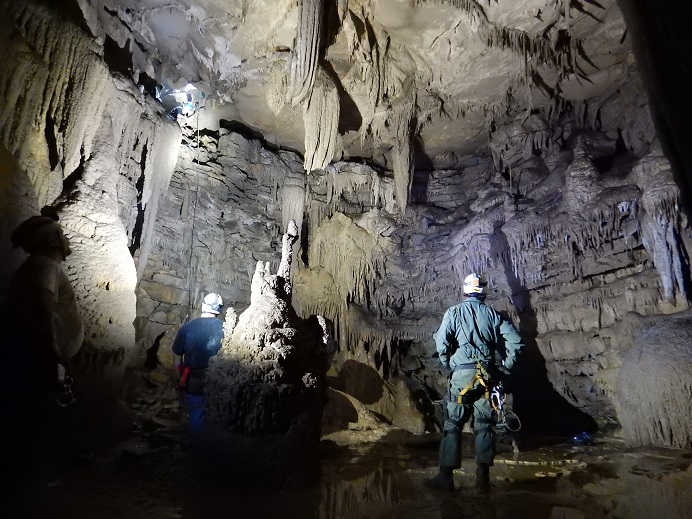
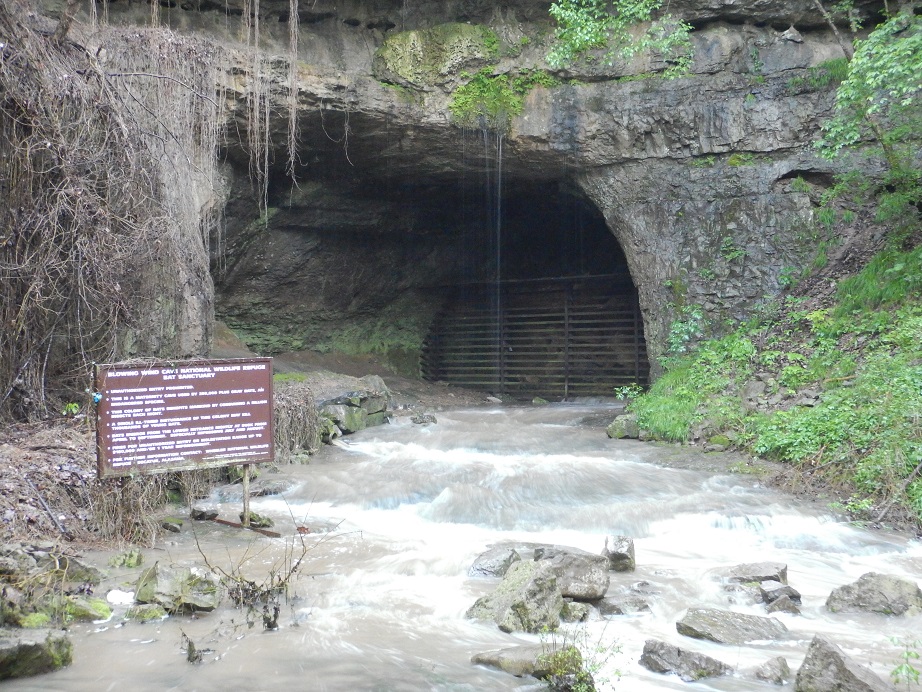
We did not expect to see much of a Bat flight at Sauta with all the rain. However, bats did indeed take flight. We watched bats dart into steady streams of falling water, one by one, for a quick drink before venturing out for the evening hunt.